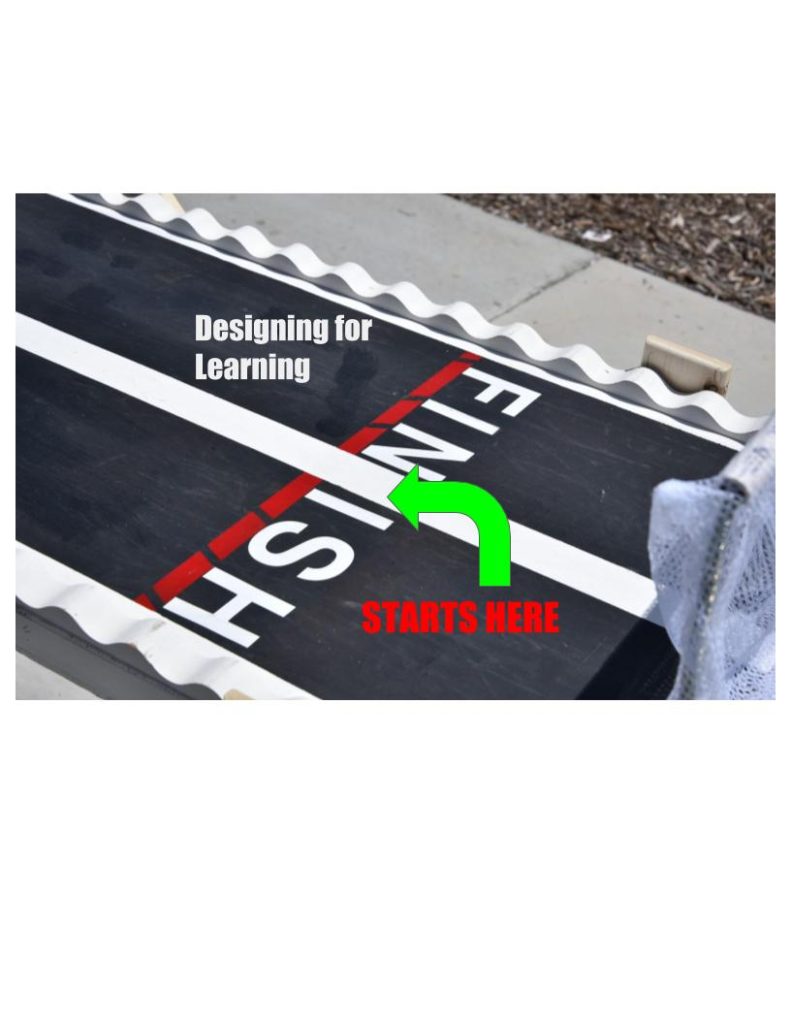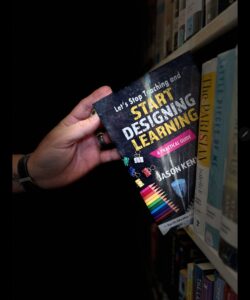Imagine this. Your supervisor brings everyone out to the front of your building, has the whole group line up side-by-side, and announces that the footrace is about to begin. Your supervisor raises a starter pistol and yells out, “On your marks! Get set! GO!” BANG! Look around you and what would you see? Some would stand there confused. Others may ask what’s going on? I imagine even a select few may take off running in random directions. The problem here is obvious. Even though your supervisor was perfectly clear on the fact this was a footrace and lined everyone up accordingly and went through the proper procedures to start the race, no one was ever told where the finish line was. Millions of our classroom lessons begin the same way.
In order for learning to be designed for effectively, teachers have to know and let the students know where the finish line (the goal) of learning is for the lesson. Our goal in the world of education is ultimately learning, so it makes complete sense to call these goals “learning targets.” Learning targets are essential for every lesson if you want to take your focus off of teaching and put it onto learning.
Why students need learning targets… because without them, they would be standing at the starting line confused and unmotivated. Think about it from a student’s view point. If I don’t understand what I am supposed to learn in the upcoming lesson, how am I supposed to focus any attention, energy or mental resources on learning? What you are left with in regards to the classroom is a room full of students who set all their attention on what the teacher is saying and directing them to do, rather than on what they are supposed to be learning. That’s the difference between teaching and learning.
Learning targets also are an essential part of teacher clarity. Hattie’s latest research puts teacher clarity at .076 effect size or roughly 2 years of potential growth. Clarity can be centered on three questions that both teachers and students should be able to answer: 1. What am I learning? 2. Why am I learning it? 3. How do I know I’ve learned it? In real-world classroom speak: What? We are learning about figurative language today. Why?We are learning about it because the learning target states that I can cite examples of figurative language and explain their effect on text and its meaning. How? The success criteria will let me know (another blog for another time). Imagine what students COULD learn, if they knew from the beginning where to set their sights on for learning.
How do teachers create learning targets… It starts with your standards. Collective UGH from the teaching masses. But it’s true. You have to dig into your standards (which is your curriculum, by the way) in order to develop learning targets for your students and their learning. Throwing a standard up and making that your target does nothing. Most are difficult for adults to understand, much less students. On a side note, I’ve been surprised frequently and often that when teachers do actually commit to this process of standard analysis for learning target creation they often discover they have been teaching a LOT of unnecessary materials or missing out on some essential skills students need. Back to the purpose of learning targets, one standard often requires multiple, scaffolded lessons of learning before mastery can happen. So, to sum up. We need to develop learning targets as teachers. The learning target is the cornerstone for all design decisions you will make as an engineer of learning rather than a teacher of content.
What are the steps to creating effective learning targets?… By clicking HERE, you can find a very brief and to-the-point method of analyzing a standard and developing learning targets. The key things to remember are: In Step 2, make SURE you are putting terminology in student friendly vocabulary. Remember, the standards were written for adults, not students. Step 3, REALLY think about what information or concept a student must KNOW and what actions or skills a student must DO in order to meet the level of mastery the standard is asking for. This is how multiple learning targets are created for the same standard because these concepts and skills must be scaffolded in order for students to be successful. I have created some examples for some guidance by academic subject areas. Please feel free to check them out HERE. Follow and contact me with any questions!


